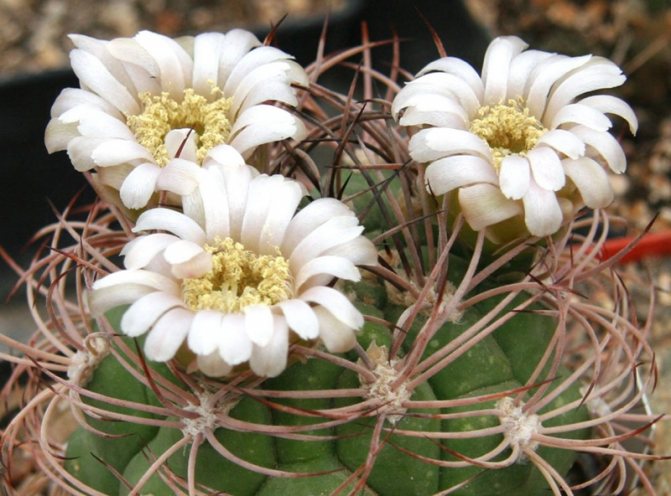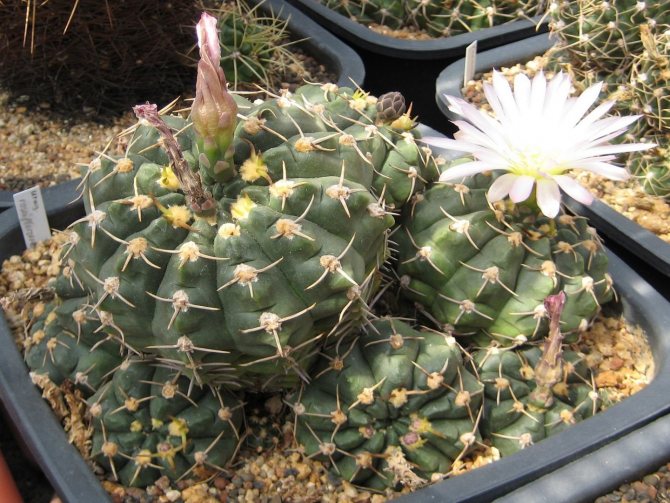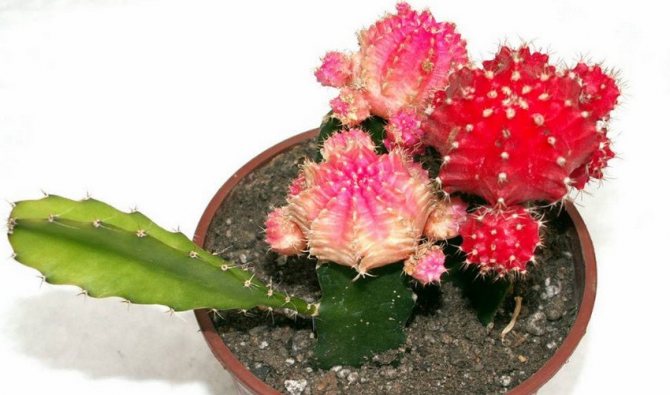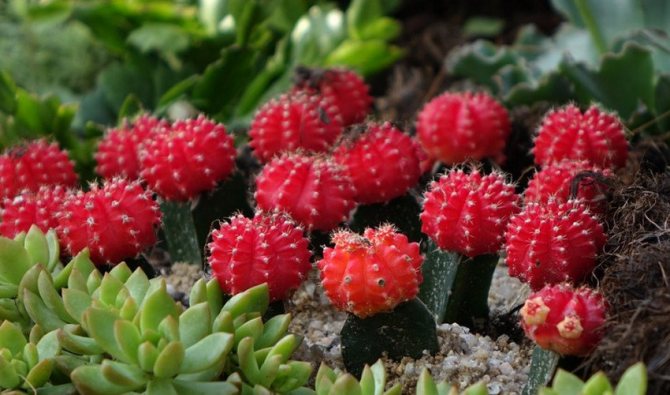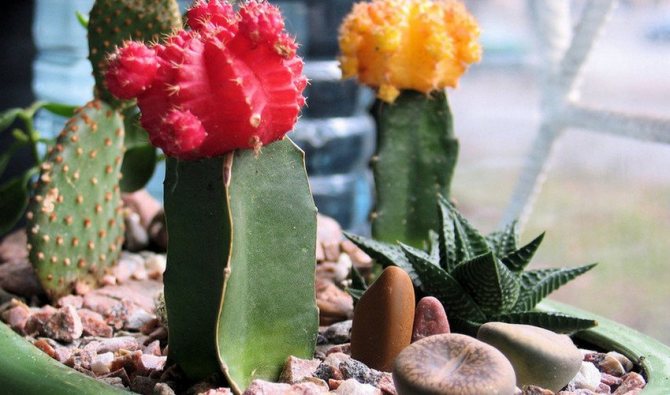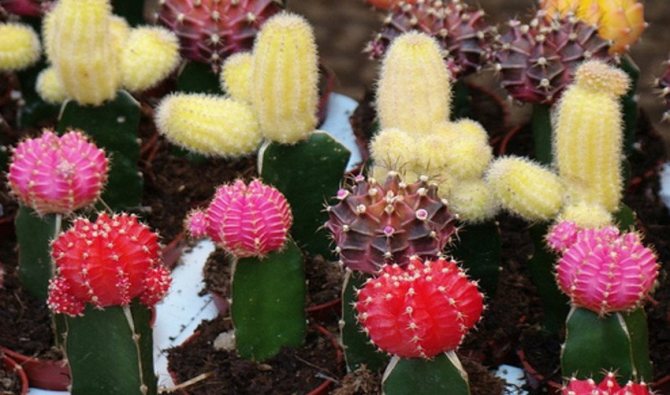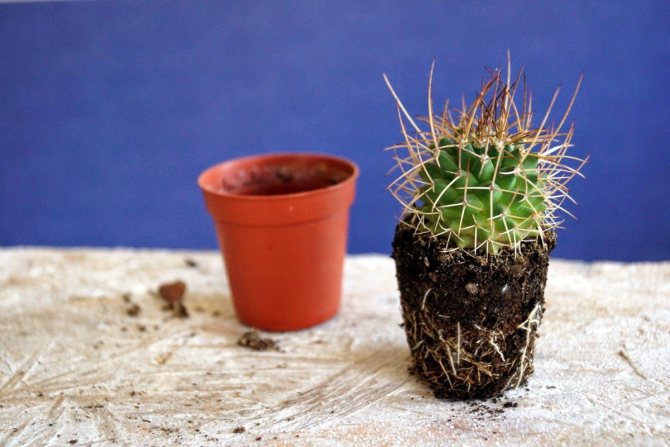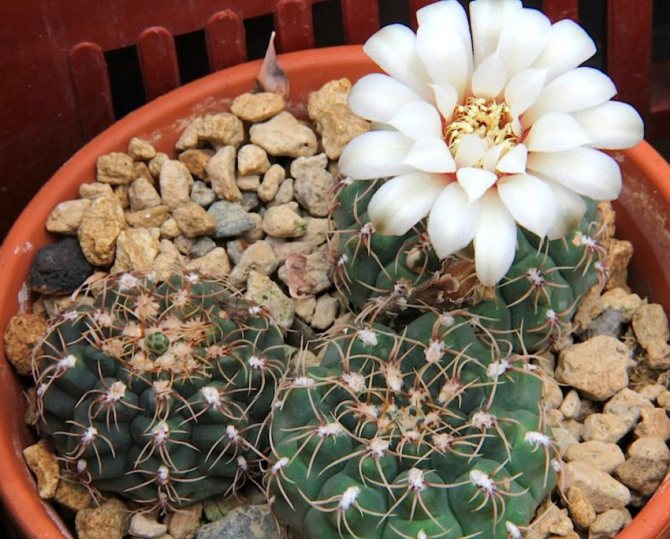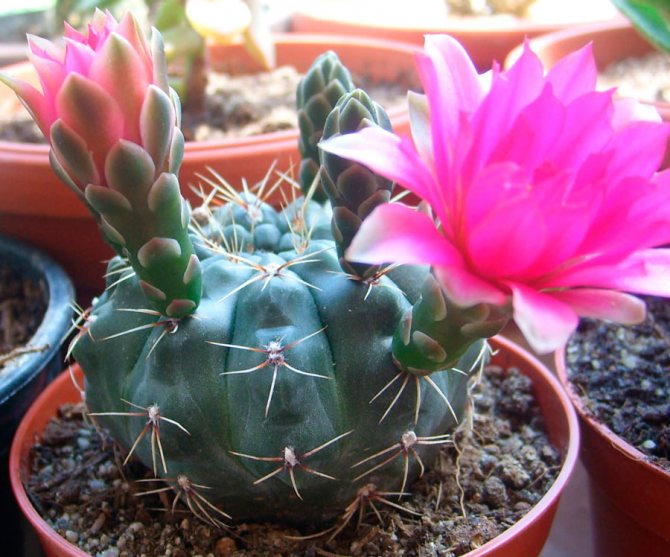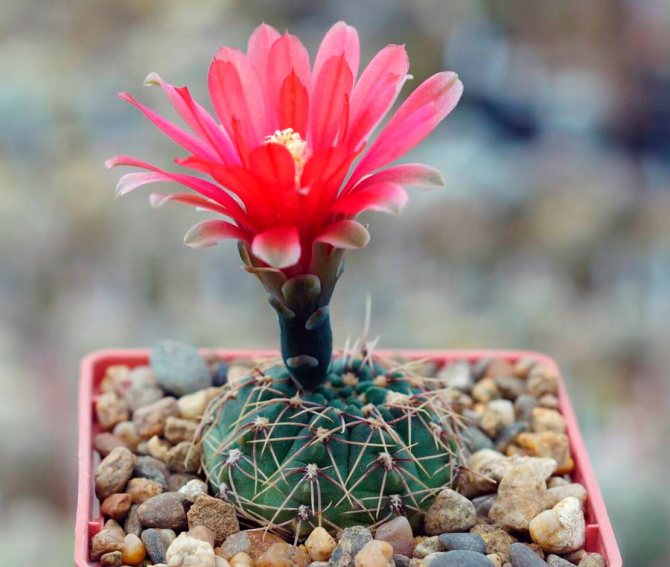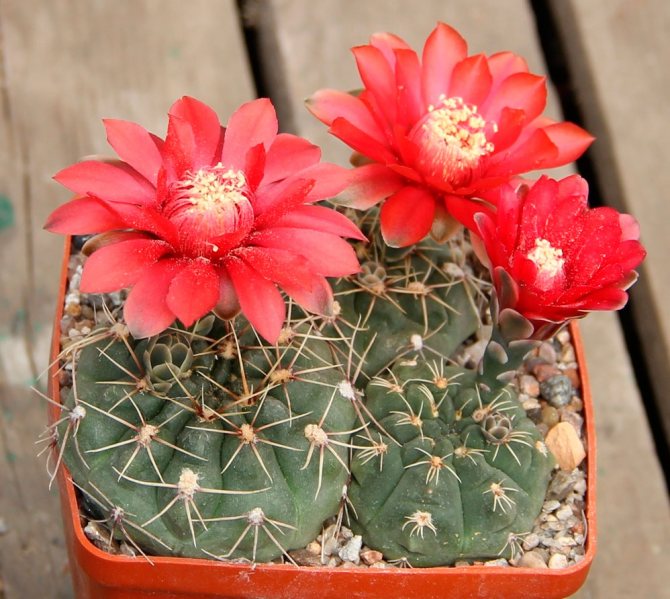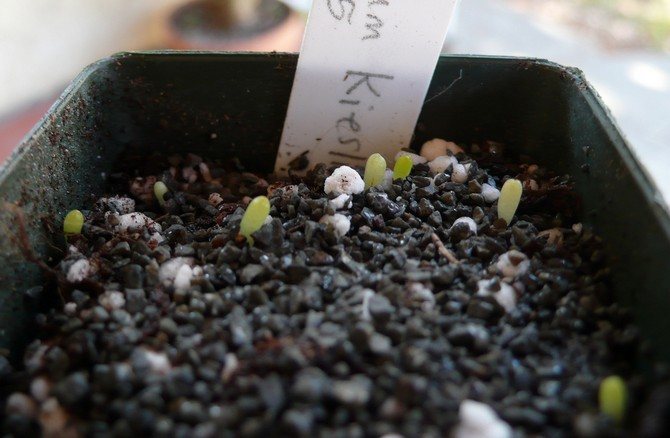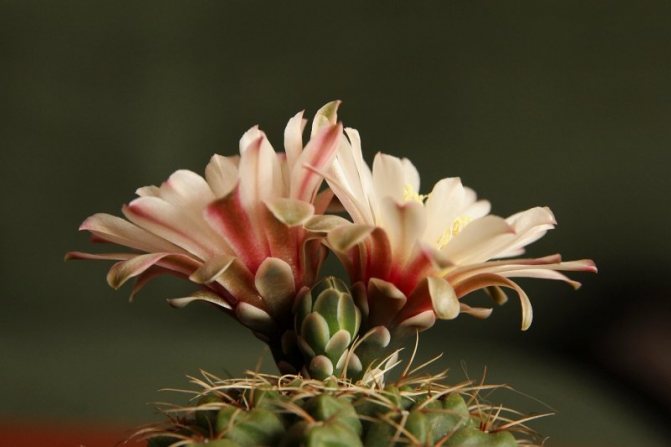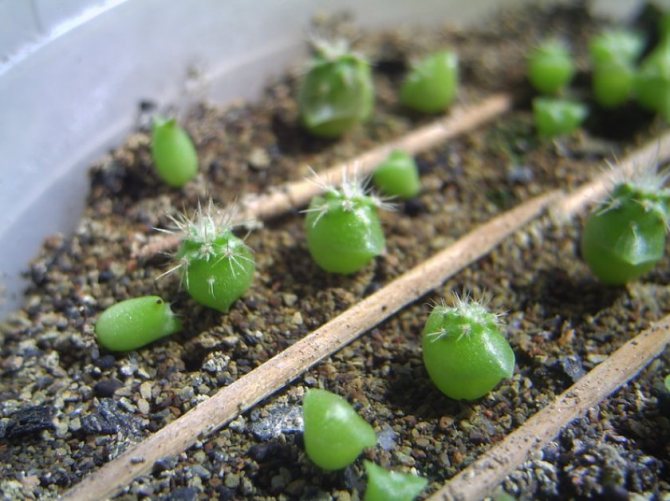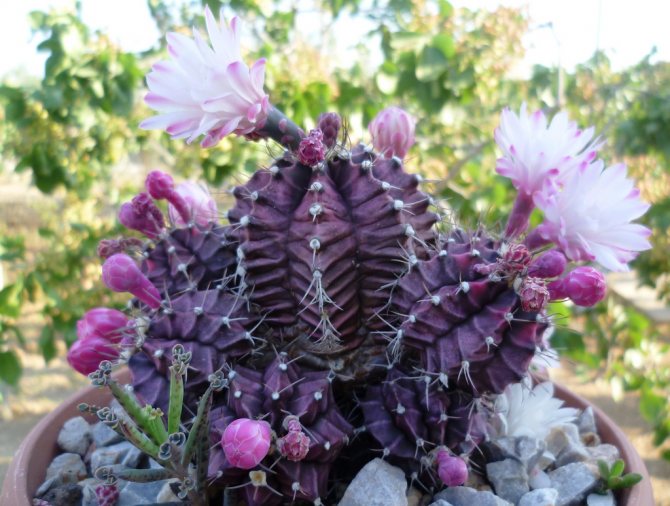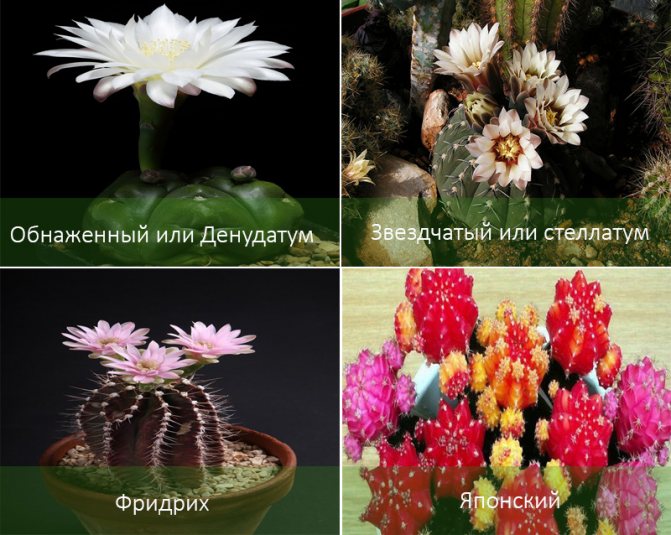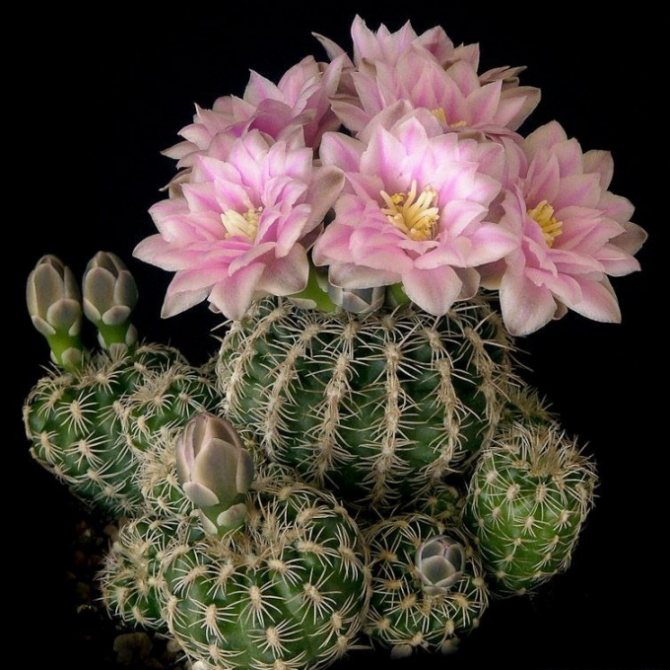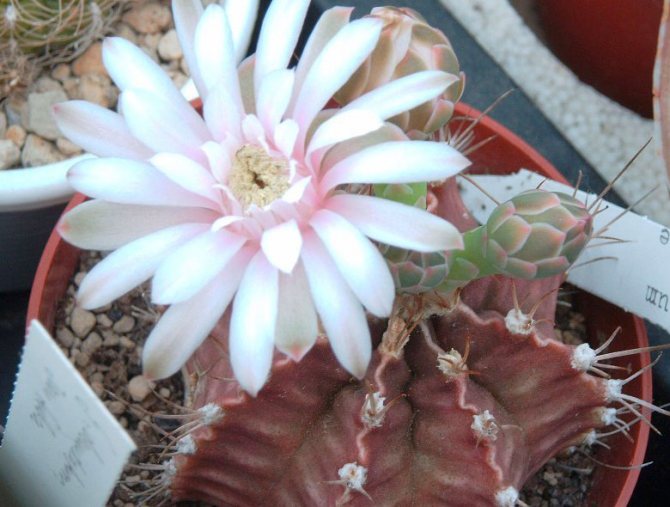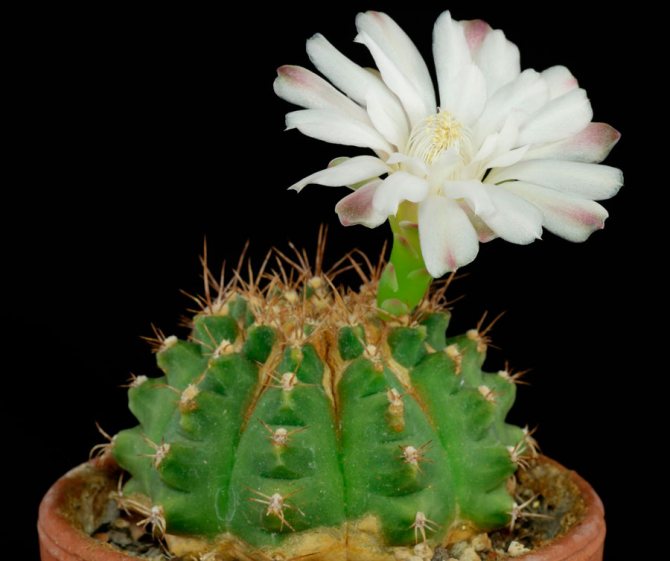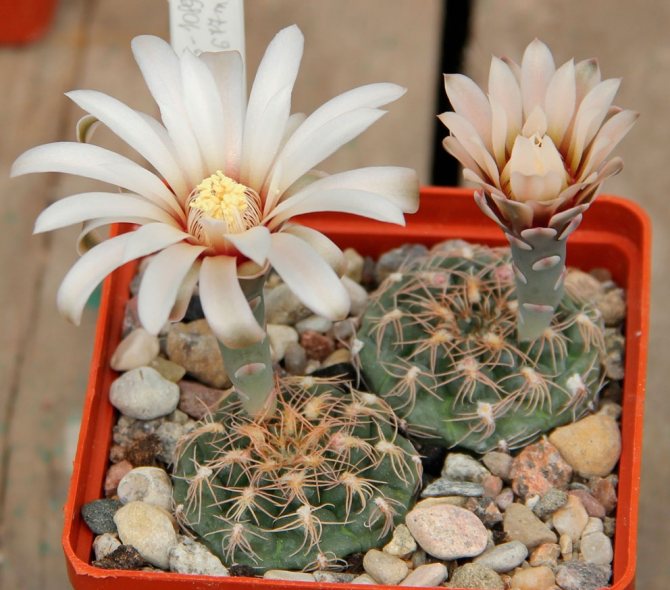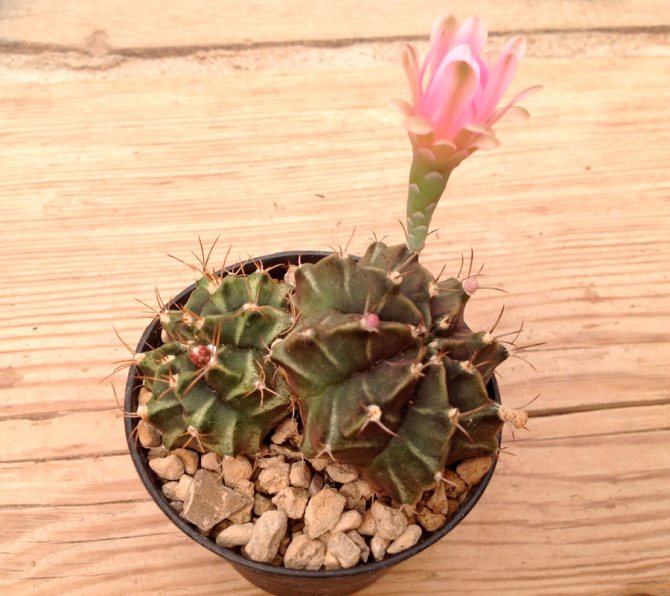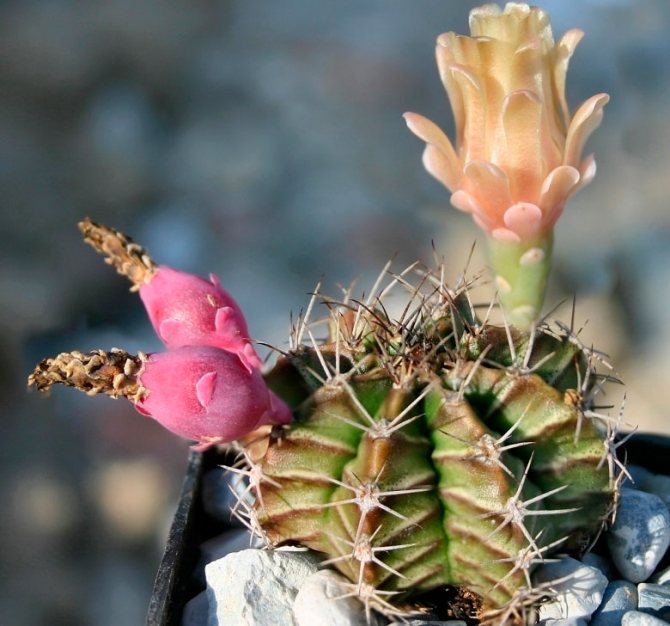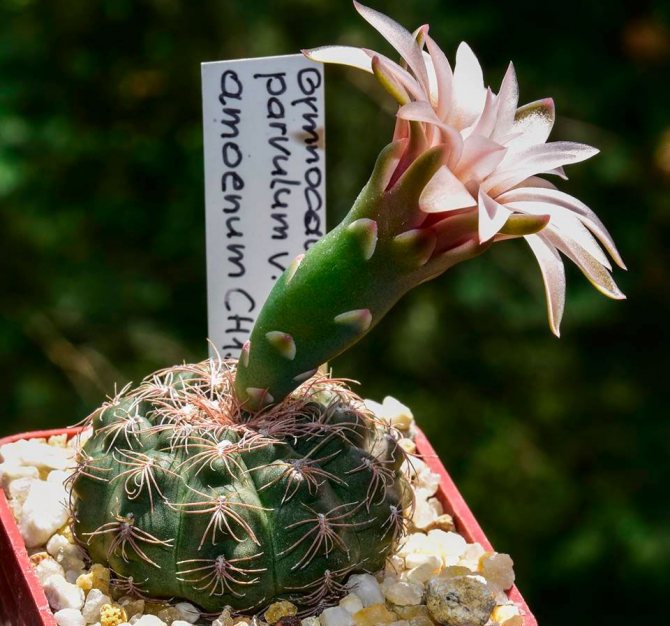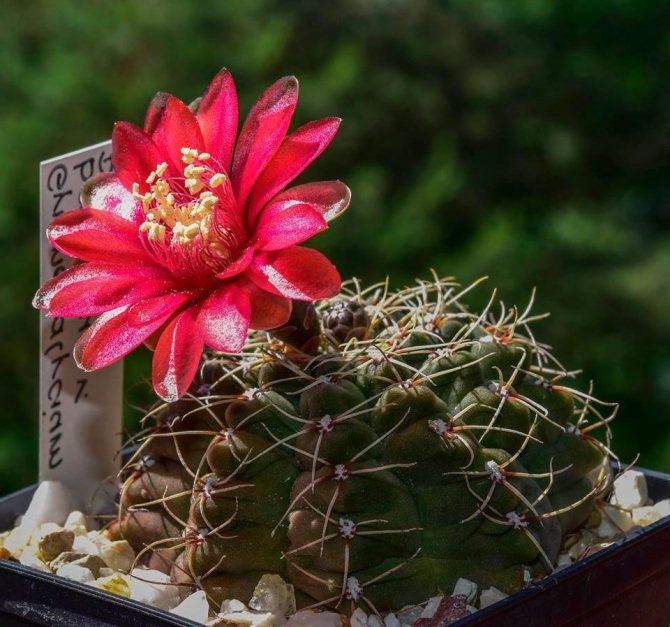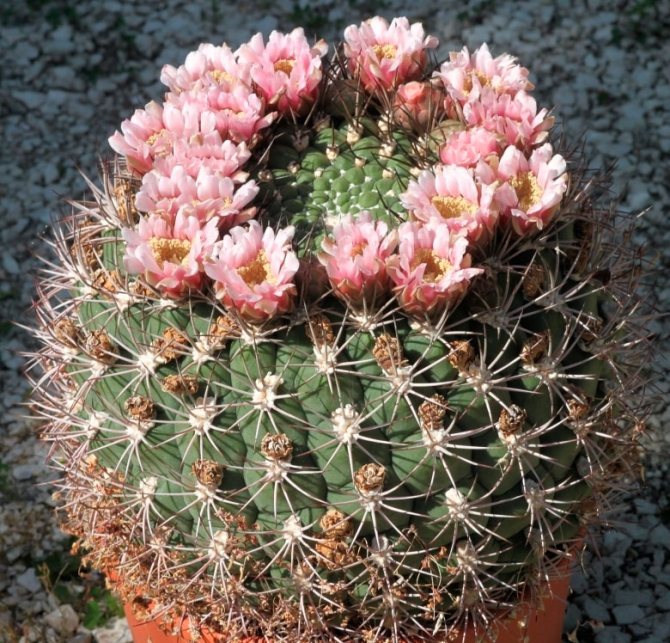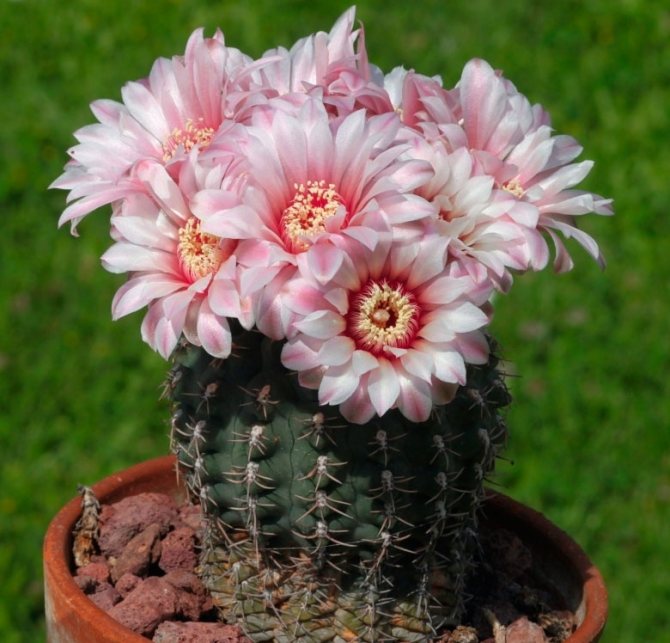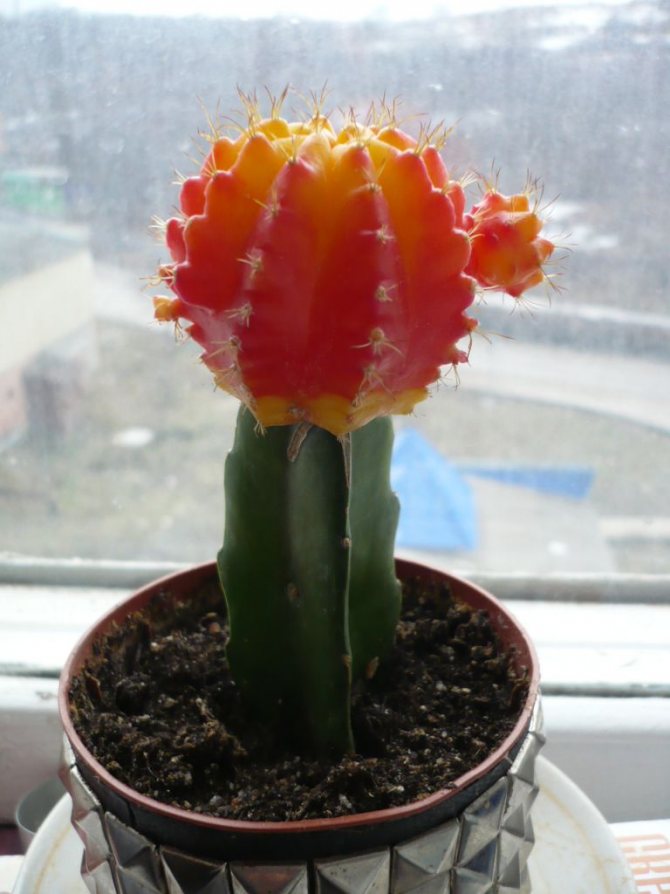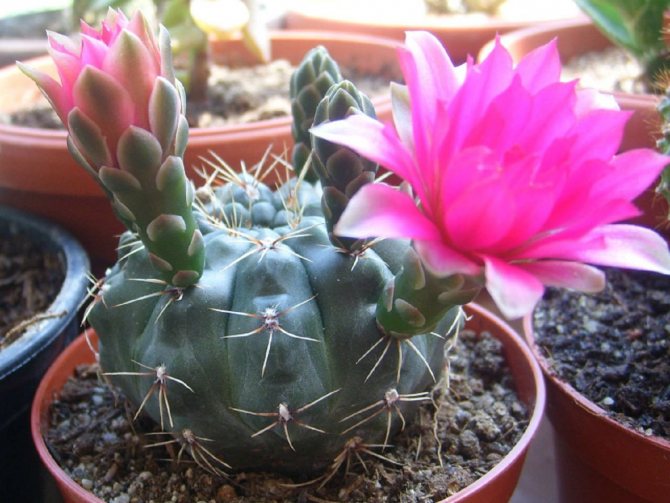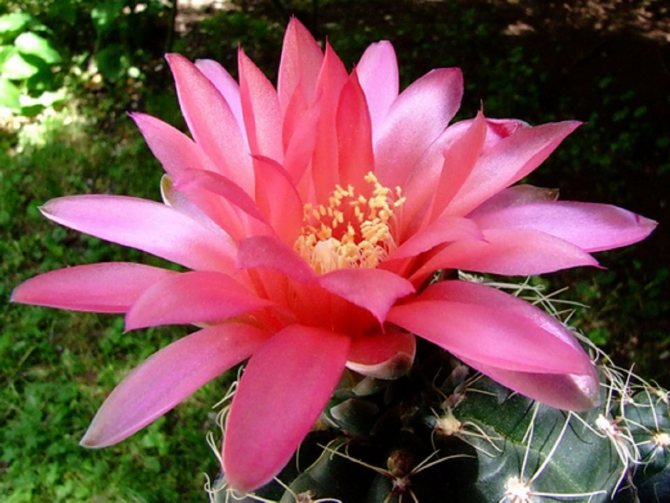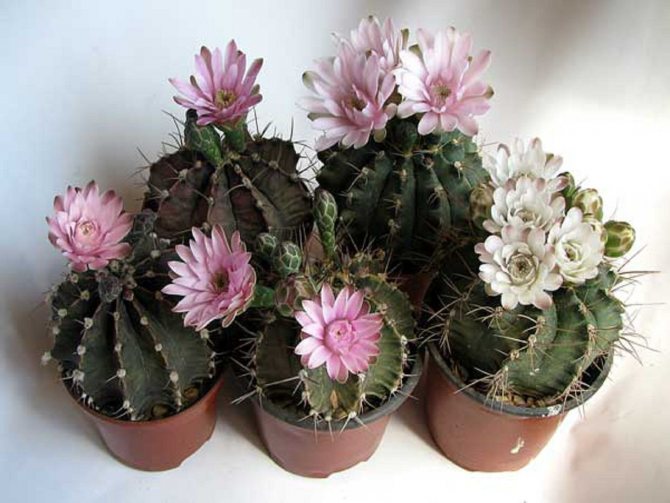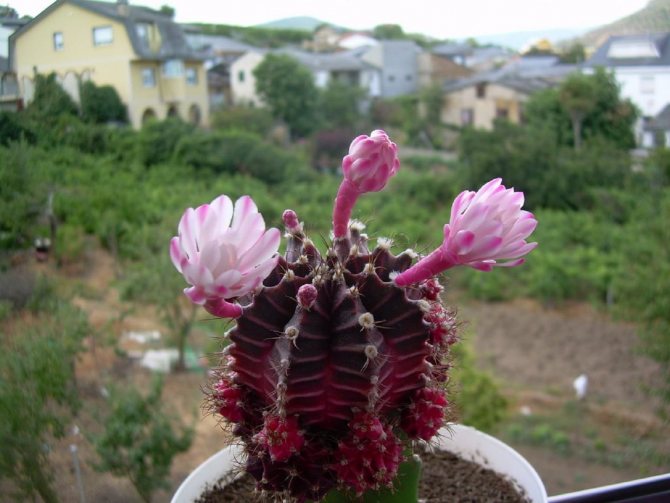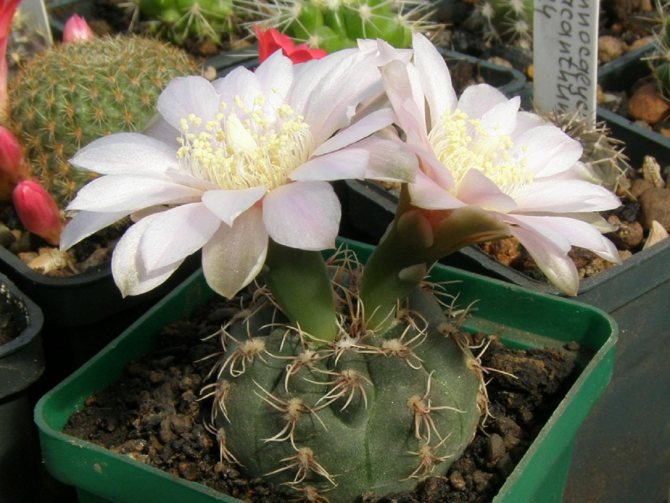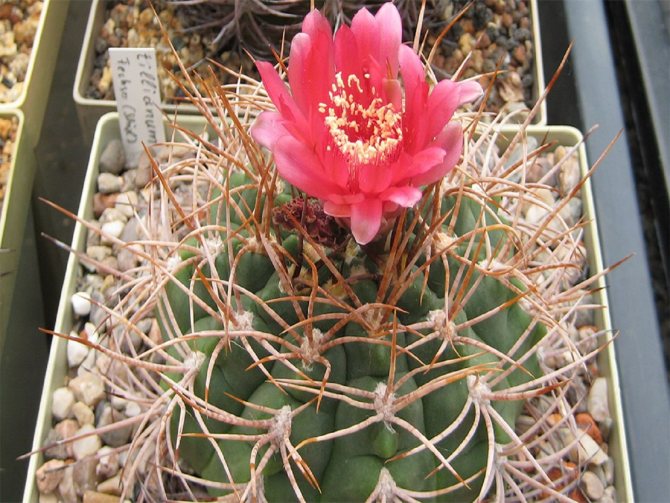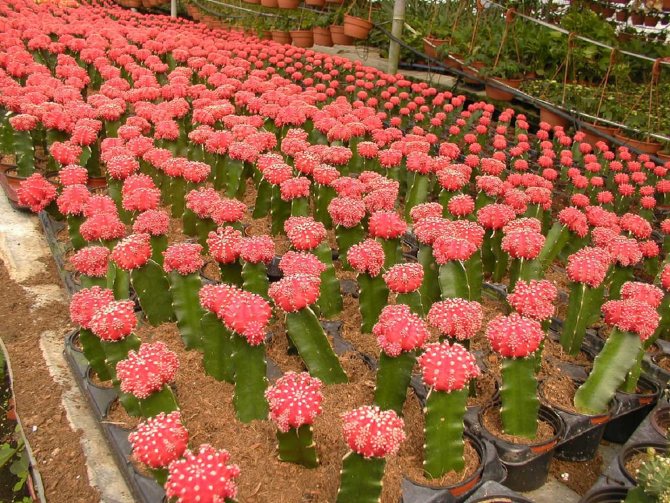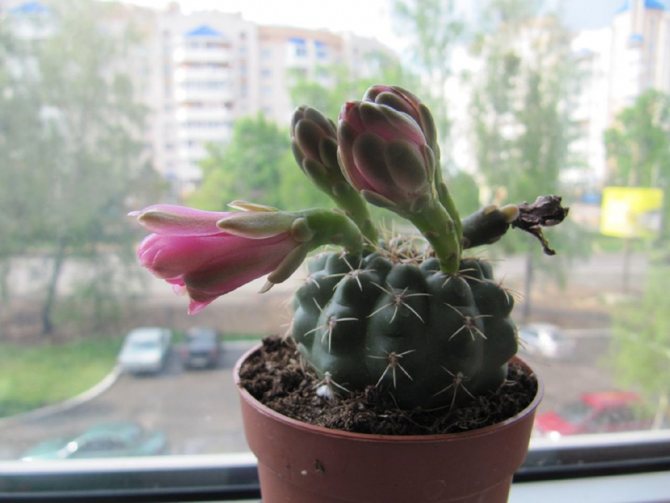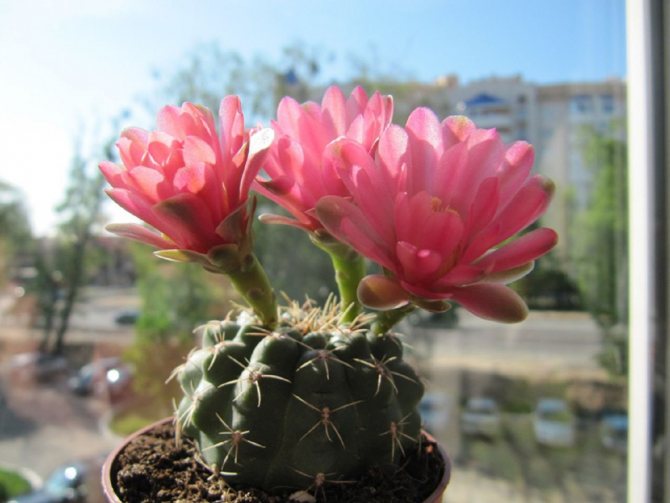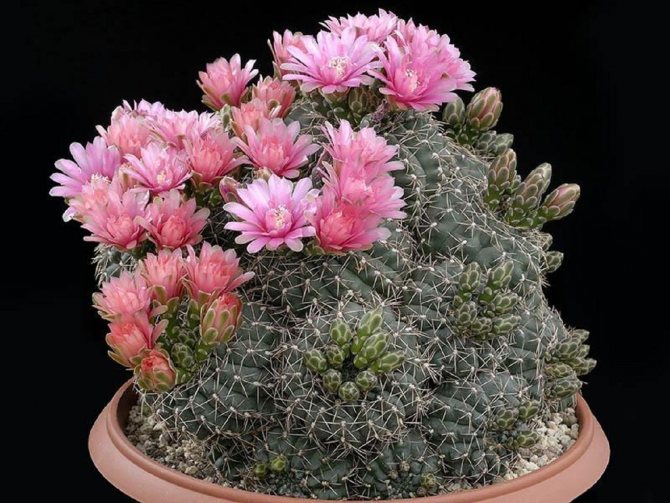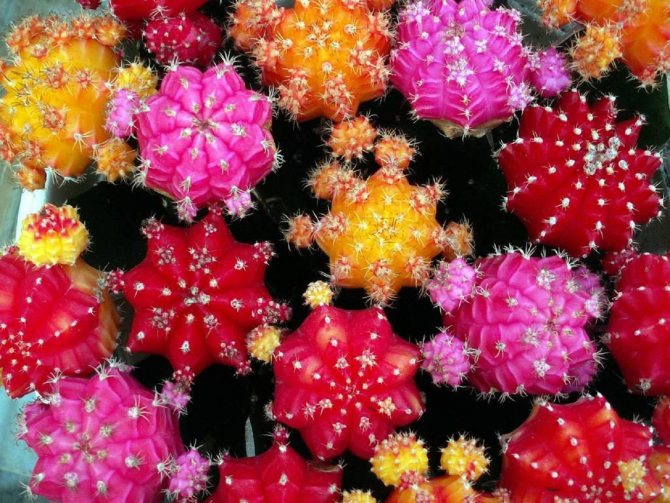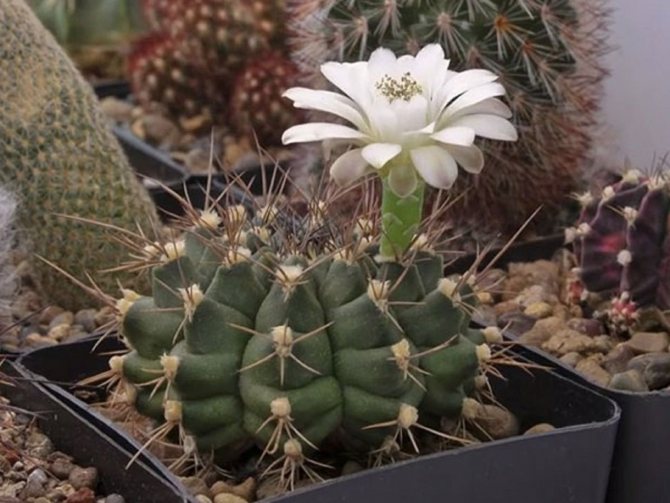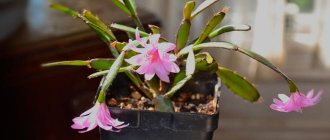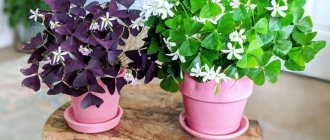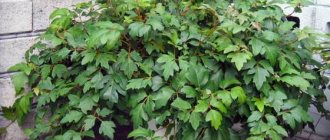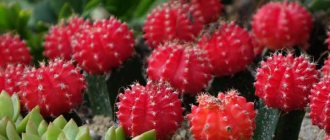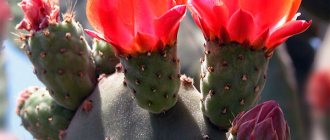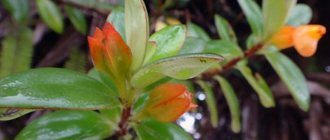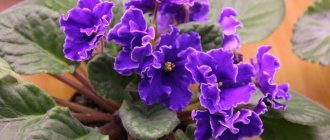Photo of the cactus Gymnocalycium (Gymnocalycium) Is an adorable cactus with a spherical stem and bright, beautiful flowers... Many growers prefer cacti due to the delicate charm of their needles and flowers. To make the plant comfortable, you need to know as much as possible about it and the rules of care in order to provide it with everything you need.
- Origin: Gymnocalycium cactus native to South America. In the wild, it grows in Bolivia, Argentina and Brazil.
- Size: the name hymnocalycium unites several different species, the size of which varies from 3 cm to 30 cm.
- Flowering: Beautiful flowers appear regularly on flower tubes that have no hairs or thorns on the surface. Almost all cactus species begin to bloom when they are 2 or 3 years old, beginning in the spring and ending in the fall.
| The cactus has a slow growth rate. |
| Flowering begins in spring and ends in autumn. |
| The plant is easy to grow. |
| Perennial. |
Beneficial features
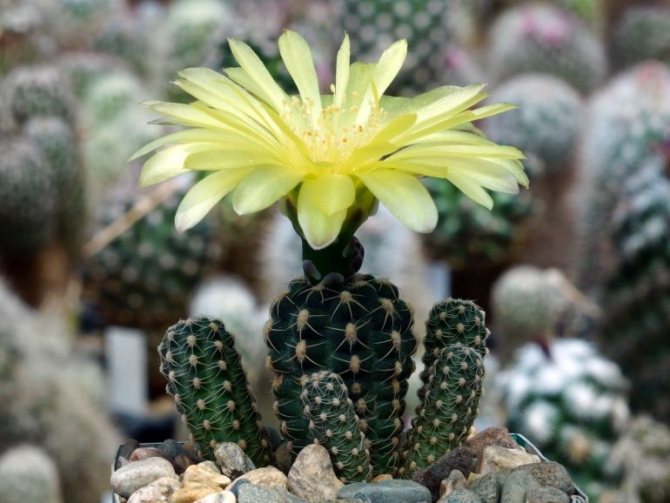
Gymnocalycium. Photo
Traditionally, they try to put this cactus closer to computers, because they believe in its ability to absorb harmful radiation. This cactus has a beneficial effect on the indoor atmosphere, purifying the air and filling it with useful substances.
Sometimes cacti are even eaten, and various objects are made from it, for example, soap and deodorants.
Features of growing at home. Briefly
| Temperature regime | In summer, the optimum temperature is from + 20 ° C to + 24 ° C, and in winter it is allowed to drop to + 15 ° C. A dangerous temperature level of + 5 ° C, because of it the plant can die. |
| Air humidity | A cactus does not need too much humidity, it feels good even in a room where central heating radiators are working with might and main. |
| Lighting | You need bright, but diffused lighting. It is best to place it on a window directed to the east or west side. If the window faces south, a sunscreen or tulle is required to prevent burnout and sunburn. |
| Watering | Like any cactus, you need moderate watering so that the soil dries well between waterings. For irrigation, soft water is used, which has settled for several days. With increased hardness of tap water, you need to add a little vinegar or citric acid to it. |
| When hymnocalycium blooms | Flowering occurs in spring and summer when the plant reaches 2-3 years of age. |
| Top dressing and fertilization | It needs fertilization only during active growth (fertilize once every 2 weeks). |
| Transfer | Young cacti require regular, annual replanting. Adult plants are transplanted much less frequently, once every 4 years. |
| Place for Gymnocalycium | Traditionally, the cactus is placed on a windowsill so that the plant receives enough solar radiation. |
Graft
Only chlorophyll-free hymnocalycium needs inoculation. Of course, vaccinations can be used in other cases: if you need to save a decaying seedling or grow rare species of cacti in a short time.
Grafting takes place according to the general rules, as for all cacti: first, healthy growing plants are selected, which are necessary for grafting.Then all instruments are disinfected and sharp cuts are made on the rootstock and scion, after which they are immediately attached, trying to connect the conductive bundles. In this position, they are secured with a bandage, but not too tightly and held that way for about a week.
Gymnocalycium care at home. In detail
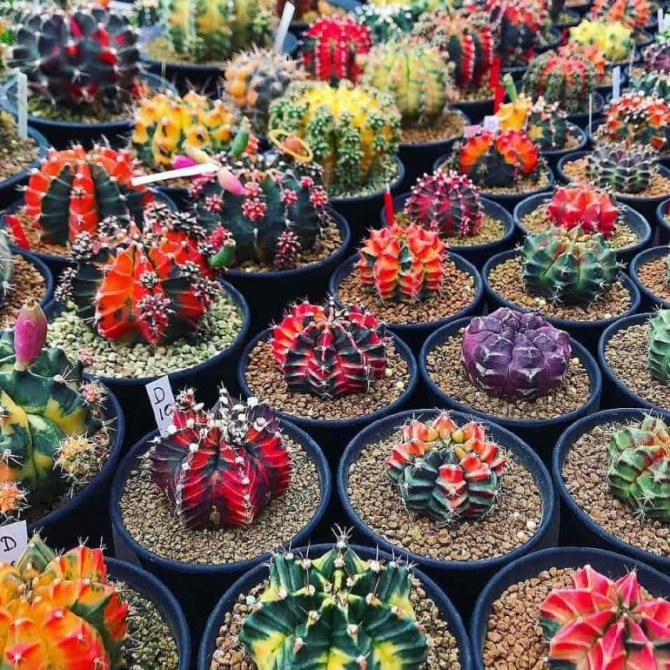

Gymnokalycium Mikhanovich. Photo
A cactus will live a long time and produce offspring if you follow the instructions below clearly.
Bloom
When the plant reaches 2 or 3 years of age, the first flowers appear on it.... This is a joyful event for the grower, as the home hymnocalycium blooms very beautifully.
With proper care, flowers can decorate a cactus from April to September.
Different types of this cactus bloom in different ways: the shade, size and shape of the flower differ.
Temperature regime
Gymnocalycium at home is quite unpretentious to the temperature regime. The optimal range for him is + 20 ° C to + 24 ° C, but even at + 15 ° C he feels good. The main condition for a cactus is temperature stability. He does not tolerate sudden temperature changes and drafts.
In winter, the cactus has a dormant period, it seems to be immersed in hibernation, so you should not heat it up too much.
Spraying
The moisture level is not very important to this succulent, so it does not require additional spraying. Regular watering is enough for him.
Lighting
Like any other cactus, indoor hymnocalycium needs intense sunlight, but on the hottest days it can get burns, especially if it stands on a window facing south.
In autumn and winter, it lacks lighting, although it is in hibernation. It is recommended to provide additional artificial lighting.
Watering
Between March and November need to water regularly, but before that you need to check: whether the soil needs additional irrigation.
To do this, you need to lower your finger into the top layer of soil: if it is dry, then it's time.
Autumn watering is less intense than summer watering, and as winter approaches, you need to water the plant less and less.
Pot
You need to choose a pot so that it is slightly wider than the root system. Home Gymnocalycium is comfortable in cramped conditions, it blooms well in a small pot.
As it grows, the pots need to be changed, also focusing on the size of the root.
Priming
Gymnocalycium at home needs slightly acidic, permeable, loose soil. You can buy ready-made soil, or you can mix leaf, peat, humus and sod soil, add a little coarse sand and perlite to the mixture.
At the bottom of the pot, you need to lay a high-quality drainage layer, on top of which purchased or self-prepared soil is laid out.
Top dressing and fertilization
During the flowering period, from March to November, regular feeding should be provided. A specialized fertilizer designed for cacti is good. Feeding regimen: 2 times a month.
In winter, feeding should be stopped to give the cactus a rest.
Transfer
While the plant is young and growing intensively, it is necessary to replant the hymnocalycium every year.
Then its growth slows down and you need to transplant the cactus into the same pot, but completely change the soil.
This procedure is performed once every 4 years.
Pruning
The hymnocalycium flower does not require pruning.
Reproduction
There are three breeding methods for this cactus.
Propagation of hymnocalycium by cuttings
It is not recommended to plant the cutting immediately after it has been cut off. First, the slice must dry out. Large cuttings usually dry out within 1 or even 2 weeks. Then they are planted in a peat substrate.
Reproduction by layering
The lateral layers of the hymnocalycium can be easily separated from the mother plant with fingers or tweezers.After drying, it is placed on a moistened substrate and provided with the standard cacti care. Rooting takes place fairly quickly. It happens that the layer has already taken root, which is intertwined with the mother. Then it needs to be dug up and planted in a separate pot. Experienced growers recommend separating the layers from the mother plant during transplantation.
Seed propagation
Seed planting is carried out in the spring. The container with soil, where the seeds are planted, must be covered with polyethylene and placed in a lighted room, out of direct sunlight.
Content
- Description
- Gymnocalycium care Cultivation
- Watering
- Fertilizing Gymnocalycium
- Gymnocalycium transplant
- Bloom
- Reproduction of hymnocalycium
- Pests and diseases of the hymnocalycium Diseases and their treatment
- Gymnocalycium naked
Diseases and pests
A rather unpretentious plant, it endures various problems persistently, but even such a persistent cactus can show signs of poor health.
- If it rots, then the watering is too intense. Excess moisture leads to decay.
- If a hymnocalycium turns yellow, which means that it does not receive enough moisture and is exposed to too intense solar radiation.
- Pests can also bother cactusare mainly aphids and flat red mites.
Popular types of home hymnocalycium with photos and names
The name of the plant brings together a huge variety of different cacti.
Gymnokalycium Mikhanovich
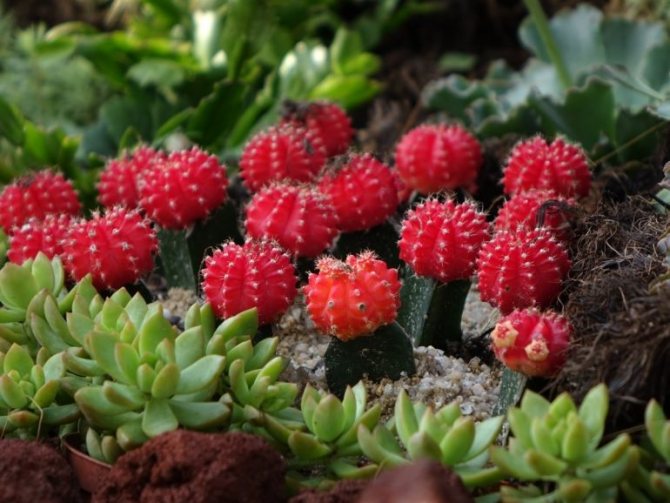

This succulent has a flattened stem reaching a height of 5 cm. It has 8-10 ribs with a pointed wavy edge. Its flowers are red or yellow. This species cannot take root on its roots, so it is grafted onto green varieties.
Gymnocalycium of Friedrich
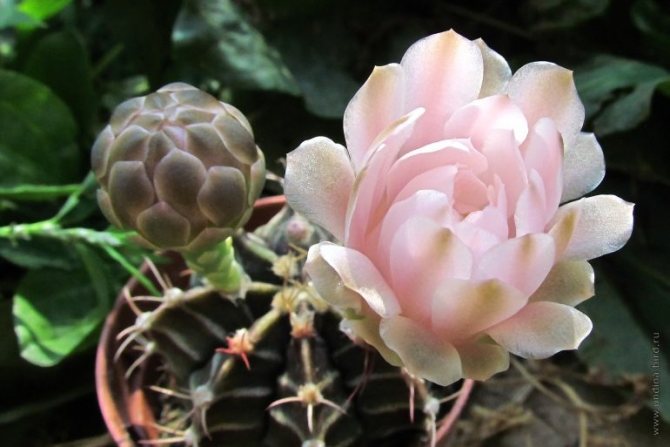

This is the "brother" of Mikhanovich's hymnocalycium. One of its varieties is crowned with a red spherical stem, which many take for a kind of flower. The popular name of this cactus is "Little Red Riding Hood", and there is no need to explain the reasons here.
Gymnocalycium Andre
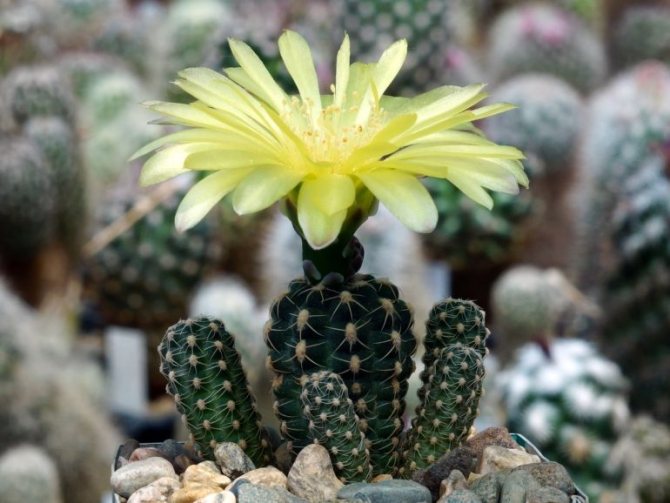

Its small flowers create bushes with many bright yellow heads. This cactus is grown in groups in a flat container. This species does not tolerate abundant watering and excessive solar radiation.
Gymnocalycium Baldianum
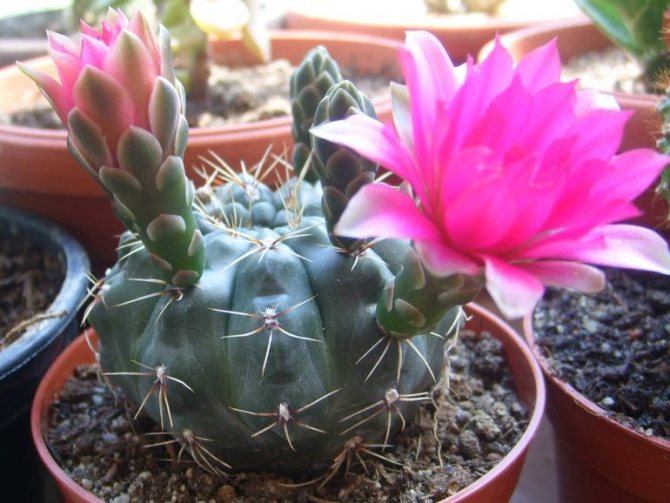

This species is known for the early appearance of flowers: already at the beginning of summer it is decorated with purple flowers. The stem of the cactus is green with a bluish tinge.
Gymnocalycium Naked
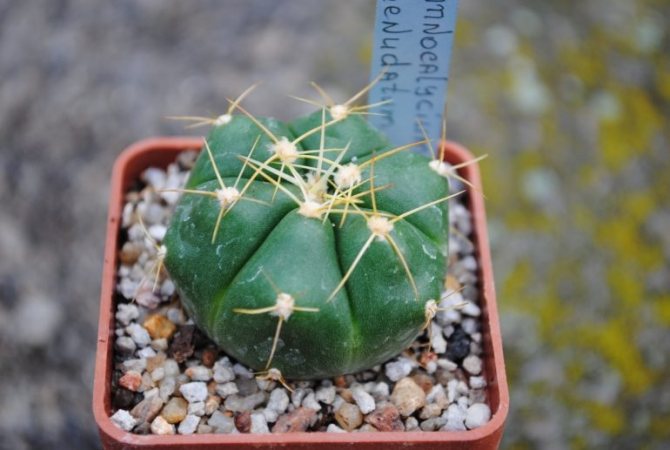

Its distinctive feature is a spherical dark green stem and side shoots. Its flowers are large, white or light pink, placed closer to the crown.
Gymnocalycium humpbacked
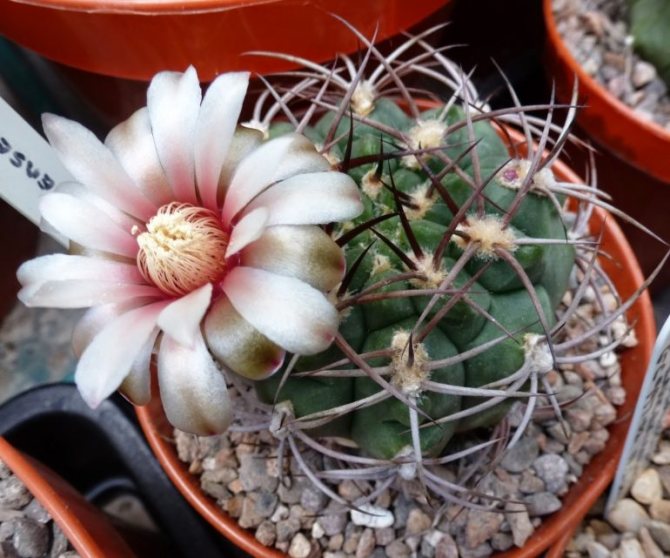

The stem of this cactus is spherical, reaching a height of 20 cm and a diameter of 10 cm. Its flowers are pinkish or white.
Gymnocalycium Quel
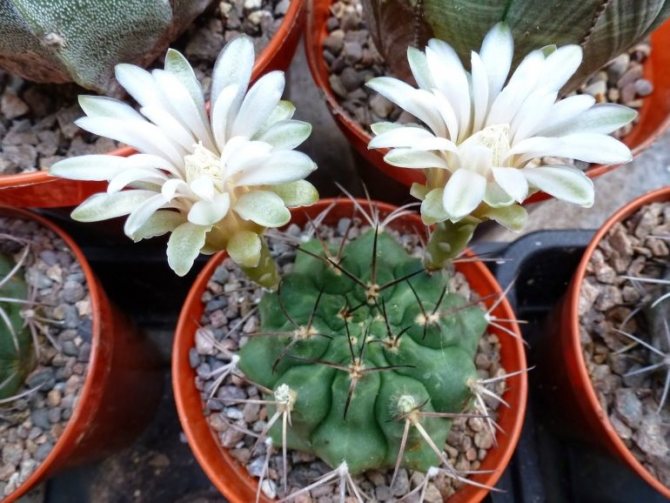

This species is characterized by slow growth, vulnerability to excess moisture, and white flowers that appear on an elongated tube.
Gymnocalycium tiny
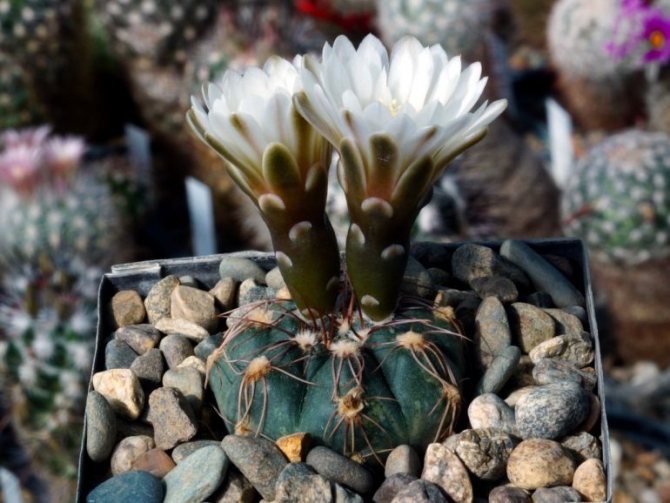

As the name implies, this is the smallest type of cactus, its diameter does not exceed 3 cm. The spherical stem has large areoles and small ribs. On such a tiny cactus, white flowers, reaching a length of 6 cm, look spectacular.
Gymnocalycium cactus is recommended for beginner growers due to their unpretentiousness and durability. They can withstand both low temperatures and occasional watering, but within reasonable limits. Even a cactus can die if you do not provide it with a minimum set of conditions.
Botanical description
Gymnocalycium cactus is a perennial with dense roots that go deep into the soil. Small flattened balls are located on the surface. Even in an adult plant, the stem diameter does not exceed 4-15 cm, and its height is almost half this indicator. In natural conditions, species with a smooth dark green skin predominate. Sometimes brown stains are visible on the surface.
Breeders have bred several decorative varieties that are distinguished by a brighter color of the shoots. They are yellow, red, or orange. This was achieved by removing chlorophyll from cactus cells, but such a plant can only develop on a scion of green succulent.
All stems have 12-32 pronounced vertical ribs covered with areoles. Bunches of spines at the base are immersed in short silvery villi. The length of the spines is 1.3-3.8 cm. In the center there are 3-5 straight, long spines, and on the sides there are shorter, radial spines.
The flowering period for the hymnocalycium occurs from May to November. Flowers are located at the top of the stem. The closed calyx is completely devoid of pubescence and spines. They consist of smooth sepals tightly pressed against each other. Lush bell-shaped flowers have several rows of lanceolate petals. In the center is an elongated tube covered with stamens from the inside. The color of the petals can be yellow, cream, red or crimson. The flower diameter is 2-7 cm.
The egg-shaped fruit is covered with small scales, like the peduncle. Its length does not exceed 4 cm. The color can be red, purple or green.


